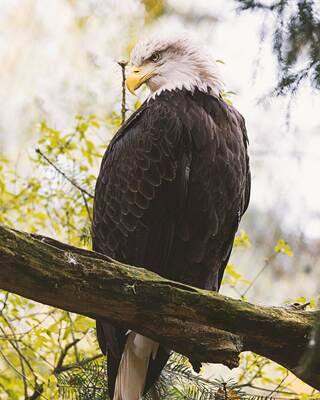
Bald Eagle
Bald eagles are majestic birds of prey, native to North America’s lakes, rivers, and coastlines. With powerful wingspans and sharp eyesight, these raptors prefer tall trees near water, where they can perch and scan for their favorite food—fish. They're skilled hunters, using strong talons and special textured pads on their feet (called spicules) to grip slippery prey.
Despite their name, bald eagles aren't actually bald! Their name comes from the striking white feathers on their heads, which they develop around five years of age.
In the mid-1900s, bald eagles faced a serious decline—dropping to just about 50 breeding pairs in the lower 48 states. The culprits? Pollution, hunting, and especially DDT, a pesticide that weakened eggshells and made successful nesting nearly impossible.
Thanks to federal protection, the banning of DDT, and cleaner waterways, the bald eagle made a remarkable recovery. In 2007, this national icon was officially removed from the endangered species list—a major win for wildlife conservation!
Say Hello to Amelia
Here at the zoo, we care for Amelia, a beautiful female bald eagle who is non-releasable due to an injury that prevents her from flying in the wild. She’s a guest favorite and a powerful ambassador for eagle conservation.
Amelia enjoys a diet of thawed rats, salmon, and a specialized meat-based raptor diet, and she absolutely loves digging through boxes, bags, or natural materials to forage for her food—a fun enrichment activity that keeps her curious and active!